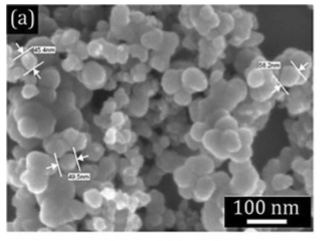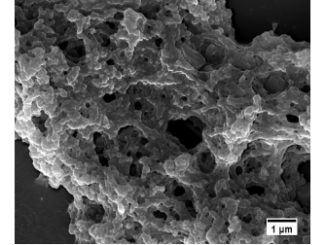
Analysis of the electrical conduction in percolative nanocomposites based on castor-oil polyurethane with carbon black and activated carbon nanopowder
Abstract: Flexible nanocomposite films derived from castor-oil polyurethane (PUR) and conductive fillers of activated carbon nanopowder (CNP) and carbon black (CB) nanoparticles were prepared by casting and characterized by scanning electron microscopy (SEM) as well as direct (dc) and alternate current (ac) electrical conductivity measurements. The fillers exhibited spherical morphology with diameters ranging between 40 and 60 nm. Compared to CNP, CB was dispersed better in the matrix. Based on the classical percolation theory, different universal exponents were obtained from the conductivity curve analysis. The PUR/CNP nanocomposite obeyed the universal percolation theory, while the PUR/CB nanocomposite did not obey it. The PUR/CNP nanocomposites exhibited a higher percolation threshold (p(c) = 29.3 vol%) and lower dc conductivity compared to PUR/CB nanocomposites (p(c) = 5.7 vol%). This difference is related to the physics and chemical characteristics of the CNP and CB filler dispersed in the matrix. The ac conductivity of the nanocomposites was described by the Jonscher power law confirmed that conduction occurs through a hopping mechanism between localized hopping. POLYM. COMPOS., 40:7-15, 2019. (c) 2017 Society of Plastics Engineers
Author (s): Rebeque, PV; Silva, MJ; Cena, CR; Nagashima, HN; Malmonge, JA; Kanda, DHF
POLYMER COMPOSITES
Volume: 40 Pages: 7-15 Published: JAN 2019
DOI: 10.1002/pc.24588




